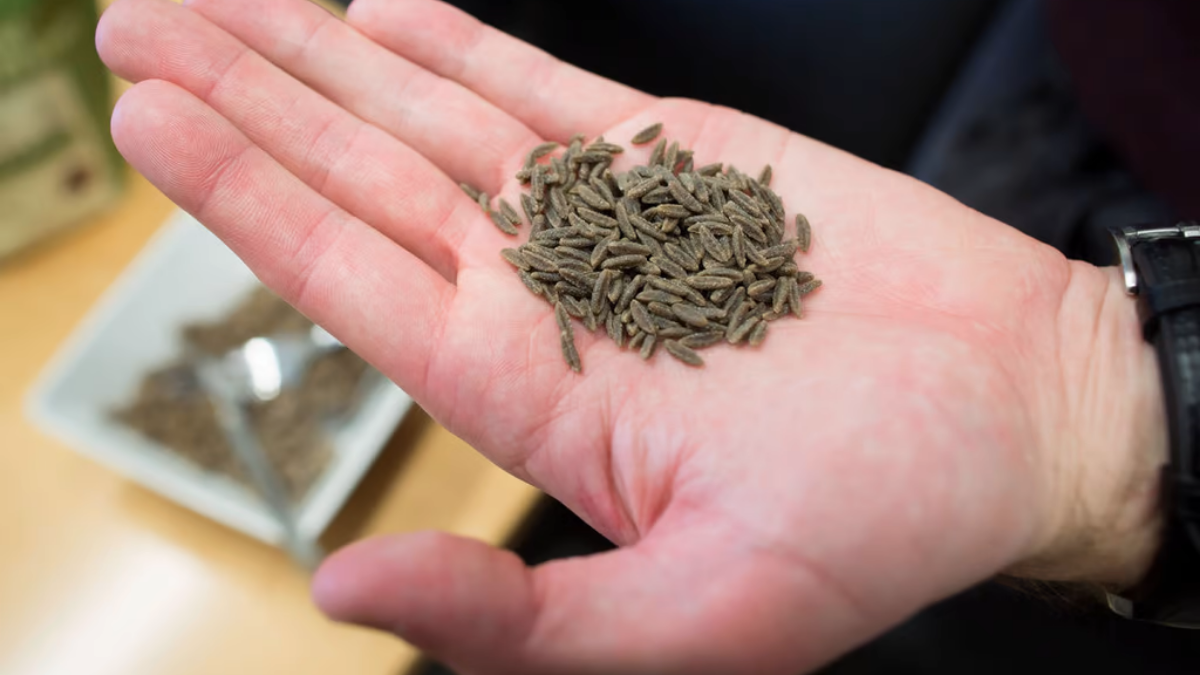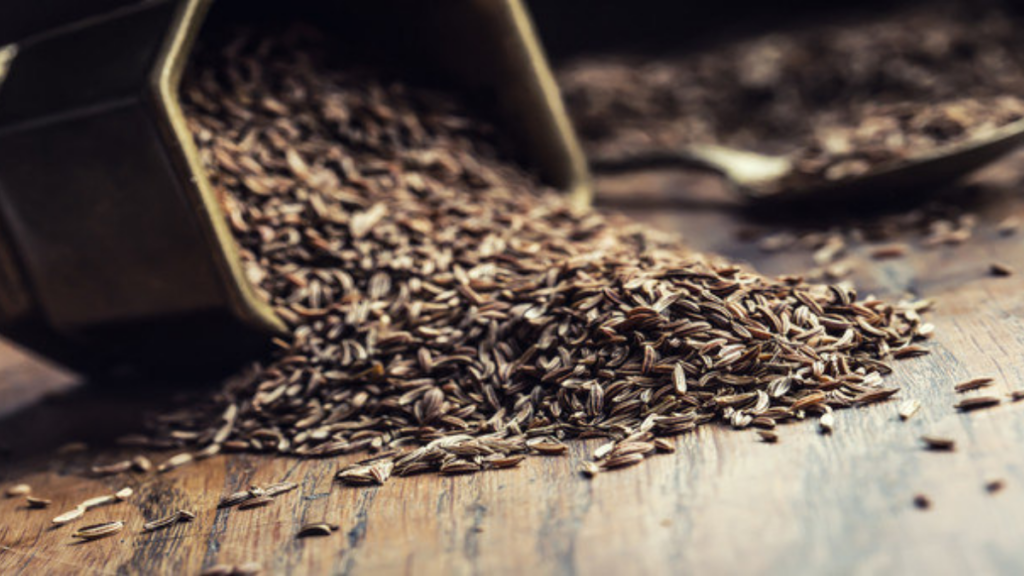Cumin is a spice made from the dried seed of the Cuminum cyminum plant, which belongs to the parsley family. Cumin is a popular spice that can be found in various cuisines, including Latin American, Middle Eastern, North African, and Indian cuisines. To know how to tell if cumin is bad, read further.
It comes in two forms: whole seeds and ground. Cumin, on the other hand, lasts three to four years. It doesn’t rule out the possibility of spoilage. Cumin that has been commercially packaged does not go bad. Its potency, however, can be lost if it is not properly stored.
It has the potential to be used to treat a wide range of health problems. Cumin, for example, may boost the immune system and help fight certain types of bacterial and fungal infections, in addition to the health benefits listed above. Cumin has also been shown in animal studies to help prevent certain types of cancer.
More research, particularly on humans, is required. Cumin, on the other hand, appears to have medical potential. The best supplement form and dosage have yet to be determined by researchers.
What is Exactly Cumin?
Cumin seeds are hand-harvested from an annual plant and are small, boat-shaped seeds that look like caraway seeds. Cumin is most commonly found in a brownish-yellow color, but black Cumin, green Cumin, and white Cumin are also available. Whole seeds (also known as jeera) are used in Indian cooking, and ground cumin is used in Mexican and Middle Eastern dishes and chili, barbecue sauce, baked beans, soups, and marinades. Cumin is a common ingredient in chili powder and garam masala, curry powder, achiote blends, adobos, berbere, and baccarat, among other spice blends. Cumin has a warm, earthy aroma and flavor with a hint of sweetness and bitterness. To get the best flavor out of the seeds, they must be toasted whole.
How to Tell if Cumin is Bad?
It can be difficult to tell whether a spice has expired or not. So, if you’re unsure whether you should eat your Cumin or not, look for the signs listed below.
- Keep an eye on the color of the Cumin. Spices stored for a long time lose their vibrancy and turn a dusty, dingy color.
- Cumin should be tasted. If it still tastes good, go ahead and use it; if it doesn’t, toss it.
- Take a pea-sized amount and rub it between your palms. Check to see if it has a strange odor. It’s best not to use it if you detect something off about the taste, color, or smell.
How Long does Cumin Last?
Almost every food’s shelf life is directly proportional to how it’s stored. Better storage results in longer shelf life. A product that is improperly stored is more likely to spoil quickly. On the other hand, Cumin necessitates better storage conditions to maintain its health. Please keep it away from moisture and at room temperature.
Perform a function that aids in extending your product’s shelf life.
The best place to keep spices for a long time is in your pantry. Cumin that has been commercially packaged can potentially lose its potency over time, and there are fewer chances of it becoming completely spoiled. Cumin should not be frozen, as this is not recommended. It is preferable to use it for three years, and Cumin can last up to three to four years in the kitchen cabinet.
Whole vs. Ground
Cumin comes in two forms: whole seeds and ground powder, which are used in cooking. Whole Cumin, for example, is used in Indian dishes, where the whole seeds are tossed into hot oil at the start of the cooking process, infusing the oil and thus the rest of the ingredients with flavor. The seed’s flavor is enhanced when it is lightly roasted, which can be done in a dry pan over medium heat.
Dry roasted cumin seeds are ground to make ground cumin. It can be added to a recipe because, unlike seeds, it doesn’t require heat or time to release its flavor. You can get a more intense and nuanced flavor by lightly roasting whole cumin seeds and then grinding them in a spice grinder or with a mortar and pestle. When using measurements for a recipe and grinding Cumin from freshly roasted seed, you might want to keep that in mind. Cumin, once ground, loses its flavor over time and should be replaced regularly.
How to Store Cumin?
Cumin must be stored in the same way as other spices. Cumin is not difficult to store, and it will assist you if you keep your spices in a condition that prevents them from spoiling. If you store Cumin as directed below, you can use it for a long time.
Store in Dark, Cool Places
Cumin’s health is largely determined by how it is stored. Cumin, like many other spices, thrives in a cool environment. It’s best if you keep it somewhere dark. The term “dark areas” refers to areas that receive little or no sunlight. Excessive heat is a factor that contributes to cumin spoilage.
Heat sources, such as ovens, should be kept away from Cumin. It would be beneficial to keep Cumin in a dark, cool location, and Cumin’s shelf life can be extended this way.
At Room Temperature
The best way to extend the shelf life of Cumin is to keep it at room temperature. We know it’s not just the temperature in the room. Along the way, we must also consider other factors.
Cumin thrives in the conditions found in your pantry or kitchen cabinet. It would be beneficial if you could keep your Cumin there for years without it spoiling. A dark and cool location inside your kitchen cabinet for cumin storage would be ideal. It is safe to use Cumin in this location, and it can also be stored in your pantry for several years.
Containers with Tight-Fitting Lids
Cumin should be stored in tight-fitting containers or jars. You can avoid moisture this way, and Cumin can’t have any moisture. In such containers, you can store the majority of your Cumin. Mold will always form in the presence of moisture, and your product will deteriorate. Cumin should not be stored in areas where moisture is a concern, and Cumin should be stored in a dry, well-ventilated area.
Cooking with Cumin
You’ll use cumin seed or ground cumin differently in recipes depending on whether the recipe calls for cumin seed or ground cumin. Whole cumin seeds should be used early in the recipe to release the spice’s essence; adding them to a hot broth or oil will allow the aroma and flavors to disperse throughout the dish. Ground cumin is a staple in various spice blends, including curry powder, and it can also be used in a rub, marinade, or seasoning for hearty dishes.
If you’re switching from whole to ground seeds (or vice versa), you’ll need to adjust the amounts. Ground cumin has a stronger flavor than whole cumin seeds, so you’ll need less of it in a dish. Use 1 1/4 tablespoons of cumin seeds in a recipe that calls for one tablespoon of ground cumin.
Freezing of Cumin
Cumin has a shelf life of three to four years and can be stored in the freezer. Ground cumin can be stored in the freezer for up to six months. However, we do not recommend that you choose the freezing option. Cumin has a fairly long shelf life already. You can freeze it if it doesn’t satisfy you. When you freeze Cumin, there is usually a problem with condensation. Freezing has drawbacks, such as the presence of unwanted moisture each time you remove spice from the freezer. If you decide to freeze Cumin, it is not a good idea. Please don’t put it in the freezer.
Conclusion
Cumin may be beneficial to people who are trying to lose weight. Cumin’s weight-loss effects were compared to those of a weight-loss medication and a placebo in a 2015 study involving overweight adults. However, you should be aware of the signs of bad Cumin and avoid using it.
When it comes to the production of Cumin, it all starts with the plant. You can harvest the seeds once the plant has reached the harvesting stage. Cumin seeds must be harvested by hand. Gently cut the stems. Don’t rush because the seeds can easily fall off, and you don’t want to waste them. After cutting them, place the stems in any bag and shake them until the seeds fall out. The stems and seeds can then be separated. Cumin seeds, in their complete form, are ready to use. However, to grind the seeds into powder, you can use any grinder.


